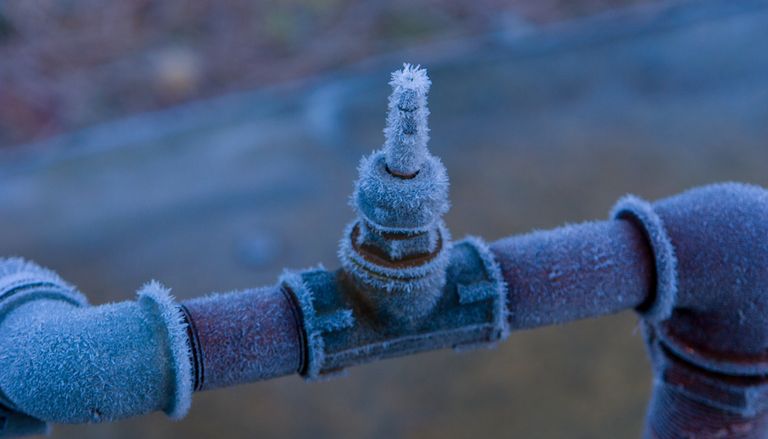Presented here below you can locate a good deal of worthwhile resources about Preventing and dealing with frozen pipes.

Cold weather can damage your pipes, especially by freezing pipes. Right here's how to prevent it from occurring and what to do if it does.
Introduction
As temperatures decline, the threat of icy pipes boosts, potentially bring about pricey repairs and water damages. Comprehending how to prevent frozen pipelines is important for house owners in cold environments.
Recognizing Icy Pipelines
What causes pipelines to freeze?
Pipes freeze when exposed to temperature levels listed below 32 ° F (0 ° C) for prolonged periods. As water inside the pipes ices up, it increases, taxing the pipe wall surfaces and possibly creating them to rupture.
Risks and damages
Frozen pipes can bring about water system disruptions, home damages, and costly fixings. Burst pipelines can flood homes and cause substantial architectural damages.
Indications of Frozen Water Lines
Determining frozen pipes early can prevent them from breaking.
How to identify frozen pipelines
Look for decreased water circulation from faucets, uncommon odors or noises from pipes, and visible frost on exposed pipes.
Prevention Tips
Protecting prone pipelines
Wrap pipes in insulation sleeves or make use of heat tape to protect them from freezing temperature levels. Concentrate on pipelines in unheated or exterior areas of the home.
Home heating strategies
Keep indoor spaces properly warmed, particularly areas with pipes. Open closet doors to enable warm air to distribute around pipelines under sinks.
Securing Outdoor Plumbing
Yard hose pipes and outdoor faucets
Detach and drain pipes yard tubes prior to winter season. Install frost-proof faucets or cover exterior faucets with shielded caps.
What to Do If Your Pipes Freeze
Immediate actions to take
If you think frozen pipelines, keep faucets open up to alleviate pressure as the ice melts. Use a hairdryer or towels taken in warm water to thaw pipelines slowly.
Long-Term Solutions
Structural changes
Think about rerouting pipelines away from outside walls or unheated locations. Add added insulation to attics, cellars, and crawl spaces.
Updating insulation
Buy top notch insulation for pipes, attics, and wall surfaces. Proper insulation assists keep consistent temperatures and reduces the danger of icy pipelines.
Conclusion
Avoiding icy pipelines calls for proactive steps and quick feedbacks. By understanding the causes, signs, and preventive measures, house owners can secure their pipes during winter.
5 Ways to Prevent Frozen Pipes
Drain Outdoor Faucets and Disconnect Hoses
First, close the shut-off valve that controls the flow of water in the pipe to your outdoor faucet. Then, head outside to disconnect and drain your hose and open the outdoor faucet to allow the water to completely drain out of the line. Turn off the faucet when done. Finally, head back to the shut-off valve and drain the remaining water inside the pipe into a bucket or container. Additionally, if you have a home irrigation system, you should consider hiring an expert to clear the system of water each year.
Insulate Pipes
One of the best and most cost-effective methods for preventing frozen water pipes is to wrap your pipes with insulation. This is especially important for areas in your home that aren’t exposed to heat, such as an attic. We suggest using foam sleeves, which can typically be found at your local hardware store.
Keep Heat Running at 65
Your pipes are located inside your walls, and the temperature there is much colder than the rest of the house. To prevent your pipes from freezing, The Insurance Information Institute suggests that you keep your home heated to at least 65 degrees, even when traveling. You may want to invest in smart devices that can keep an eye on the temperature in your home while you’re away.
Leave Water Dripping
Moving water — even a small trickle — can prevent ice from forming inside your pipes. When freezing temps are imminent, start a drip of water from all faucets that serve exposed pipes. Leaving a few faucets running will also help relieve pressure inside the pipes and help prevent a rupture if the water inside freezes.
Open Cupboard Doors
Warm your kitchen and bathroom pipes by opening cupboards and vanities. You should also leave your interior doors ajar to help warm air circulate evenly throughout your home.

We were introduced to that editorial on Prevent Frozen Pipes from a good friend on a different website. Kindly take the opportunity to promote this content if you enjoyed reading it. We treasure reading our article about How To Avoid Freezing Pipes.
Book Now!